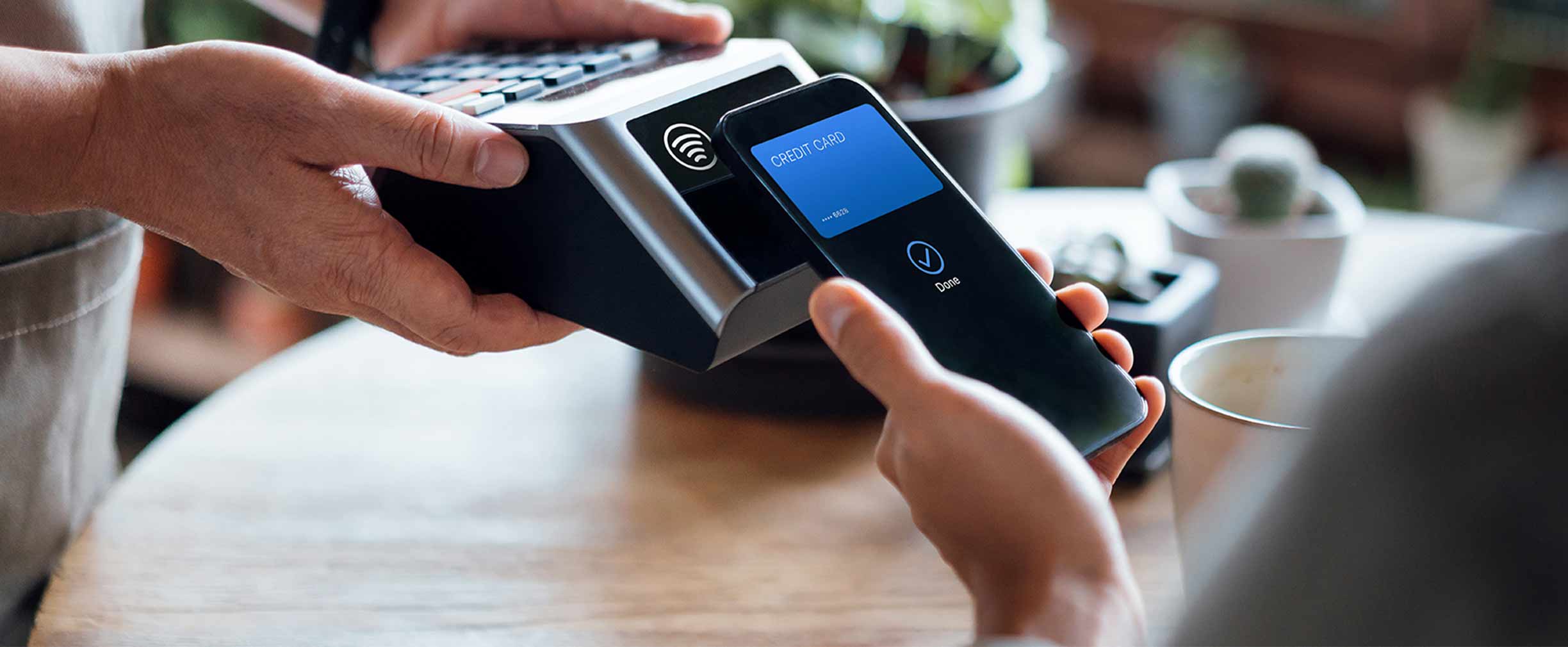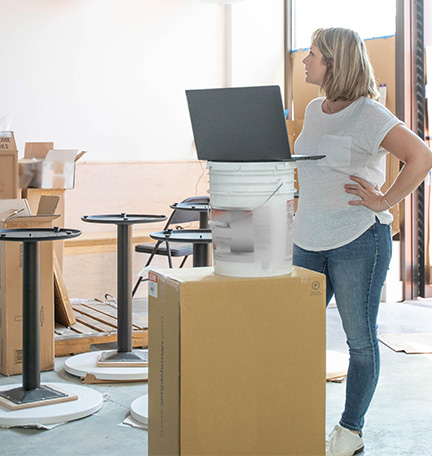Are you prepared to start accepting Apple Pay®, Google Pay™ and other digital payments?
Payment technology is rapidly evolving, becoming faster, smarter, safer and more accessible for both merchants and consumers. Digital wallets, in particular, have broken through in a big way, with 43% of consumers in North America reporting using one at least five times a month, according to a 2022 survey. That percentage is expected to skyrocket in the coming years, particularly as financial institutions continue to provide businesses with payment terminals that can communicate with smartphones and bank cards using what is called near-field communication capabilities, or NFC.
“Digital payments really have become ingrained in the fabric of consumer payment behavior,” says Tim Mills, Emerging and Digital Payments Group Manager at Regions. “They’ve become a de facto part of life in the 21st century.”
This growing interest in contactless payments will come as no surprise to many business owners and merchants. Still, to prepare for this ongoing technological shift, both online and brick-and-mortar retailers might want to understand some of the consumer preferences driving it.
The Rise of Digital Wallets
The number of U.S. consumers using digital payments, like Apple Pay, Google Pay and PayPal, is expected to surge from 160 million in 2022 to more than 260 million in 2030, according to one projection. Retailers have responded accordingly: 80% accept Apple Pay or plan to do so in the next 18 months, the National Retail Federation reports; 65% take Google Pay or plan to.
With 84% of consumers in another survey saying that they expect to be able to make purchases when and how they want, those retailers that still don’t accept digital wallets may find themselves disappointing their customers.
What’s Driving the Growth
Health and safety concerns spurred the increase in digital wallet usage during the pandemic, but now other factors are at play, first and foremost convenience. Digital wallets enable consumers to reduce the number of cards they carry—and serve as an alternative when a shopper doesn’t have a physical payment method on hand.
Another development that’s making digital wallets more convenient is the emergence of the Internet of Things, says Mills. Consumers can use voice-activated digital assistant tools to make payments with their digital wallets, for example. Automakers have partnered with payment processors to allow drivers to use digital wallets to pay for everything from gas to groceries without leaving their cars.
An additional benefit that appeals to both customers and merchants alike is increased security, says Mills. Rather than sharing a user’s credit or debit card number, digital wallets frequently rely on tokenization, which means that a merchant receives a unique code (rather than an actual card number) for any digital wallet transaction. Tokenization helps ensure that, if a merchant is hacked and payment card data is exposed, a customer’s actual debit or credit card number isn’t compromised. “If there is a breach, the ability for the bad guys to have something that they can use is really eliminated, since the tokenized data is tied to a specific transaction,” Mills says.
Digital wallets offer both merchants and customers one more compelling benefit: speed. Most payments made through digital wallets can be completed in just a few seconds. Shorter wait times at checkout can improve the customer experience, while also making the process easier for employees and increasing sales for the business or merchant.
Other Emerging Payment Methods
While PayPal, Venmo, Apple Pay and Google Pay remain the most popular digital wallet payment options in the United States, other digital payment methods are out there. QR codes are gaining popularity in many parts of Asia, Latin America, the Middle East and Africa. In the United States, QR payments are most commonly made on peer-to-peer payment apps like PayPal and Venmo, making them an attractive payment method for unbanked or underbanked consumers. Recently, Early Warning Services announced the rollout of a new wallet that uses cellphone numbers and email addresses to facilitate payments at the point of sale.
Cryptocurrency continues to generate interest from consumers as an alternative form of payment, even amid ongoing volatility in the cryptocurrency markets. A quarter of consumers favor merchants that accept cryptocurrency, an April 2022 survey from PYMNTS found. But even though Bitcoin, Ethereum and other cryptocurrencies are catching on with consumers, the U.S. Chamber of Commerce advises merchants to proceed with caution before accepting digital currencies as a form of payment because of the sometimes sharp fluctuations in their value.
Merchants should also keep in mind that accepting crypto could require developing a relationship with a new payment processor and paying any associated fees, Mills says. “Companies should consider whether or not accepting crypto fits with their business strategies going forward.”
How to Start Accepting Digital Wallet Payments
Wondering how to start accepting Apple Pay, Google Pay and other digital wallets? The answer will depend on one key factor: the type of point-of-sale (POS) technology you’re currently relying on.
If you’re a brick-and-mortar merchant who’s already using an NFC-enabled terminal or another type of POS technology that enables you to accept contactless payments, here’s the good news: You’re already equipped with the technology you need to accept payments via digital wallets. To ensure a seamless experience for your customers, make sure your staff is properly trained on how these payment methods work.
If you’re still using an EMV (chip-and-PIN) terminal, however, you will need to upgrade your POS technology in order to start accepting contactless payments.
Three Things to Do
- To explore smart terminals designed to help you grow your business, see our payment solutions.
- Learn about the differences between EMV and NFC payment options.
- Be prepared to combat point-of-sale fraud.











